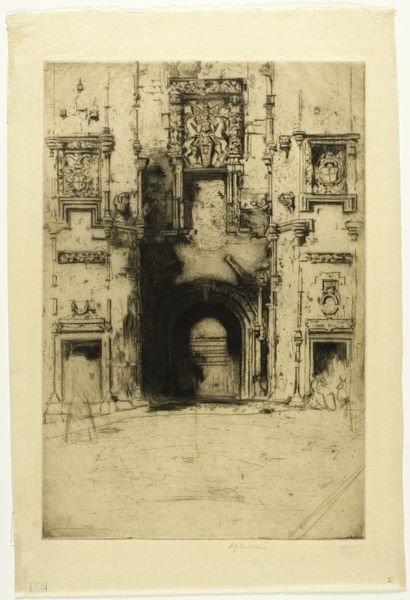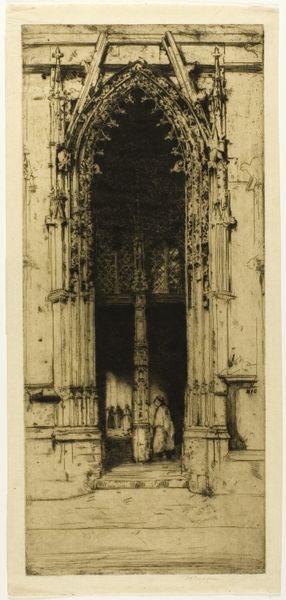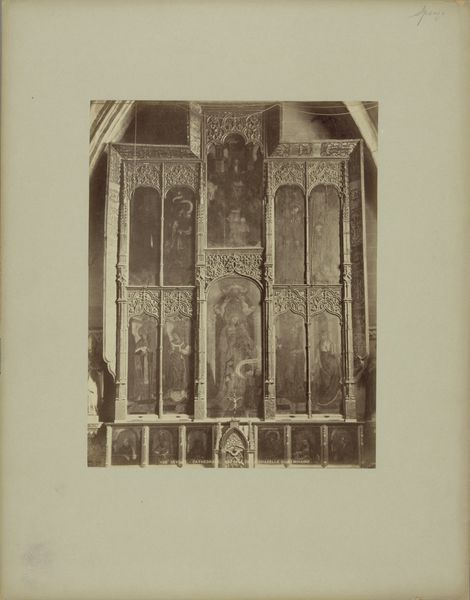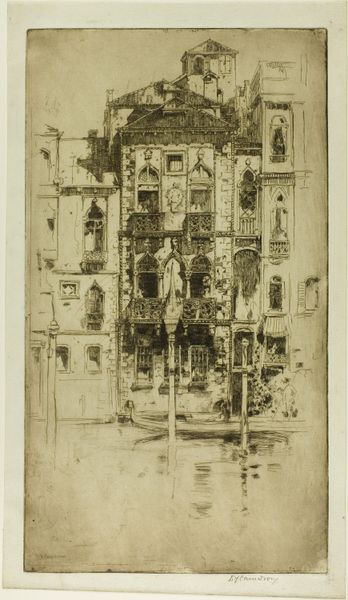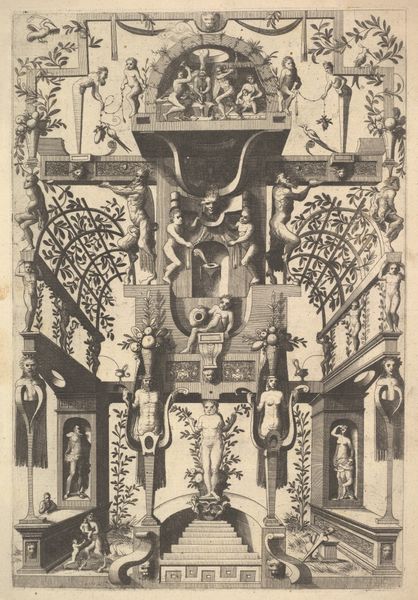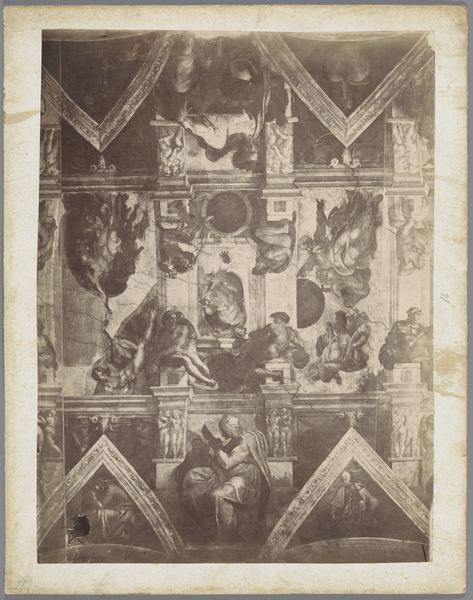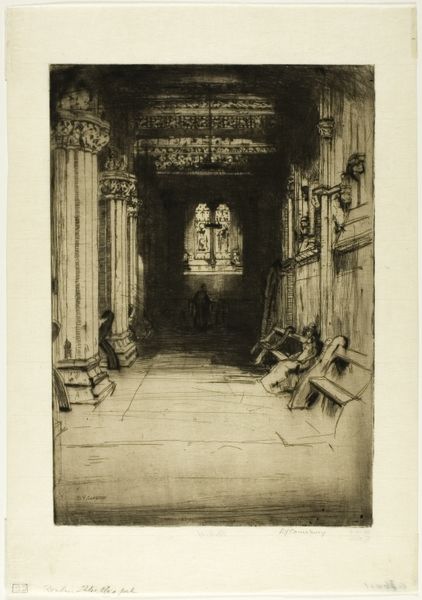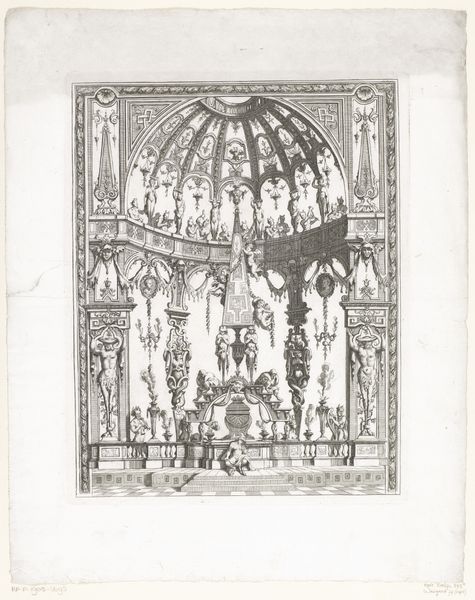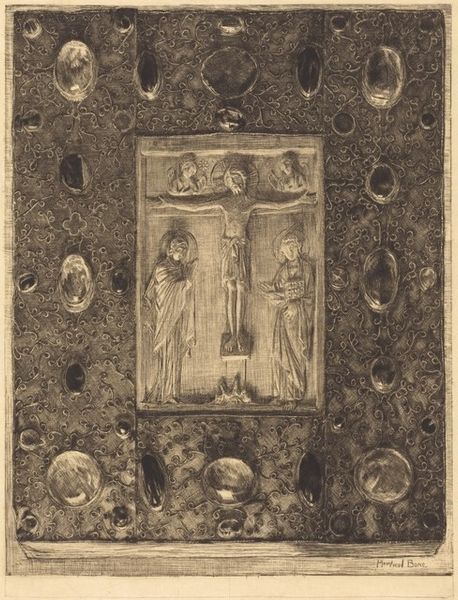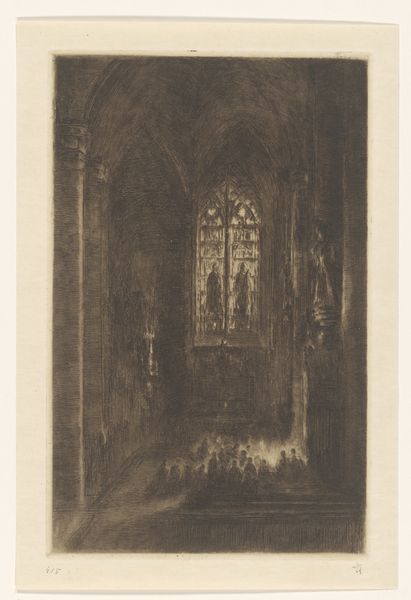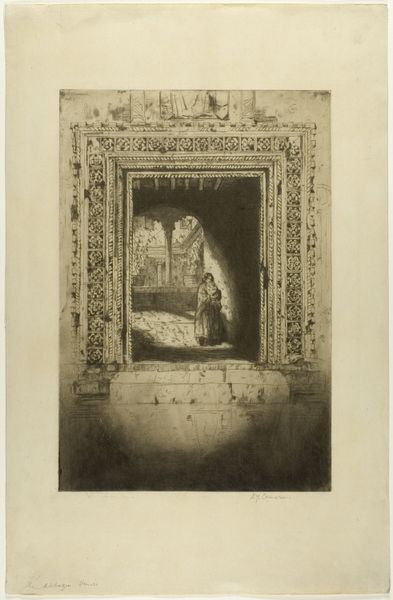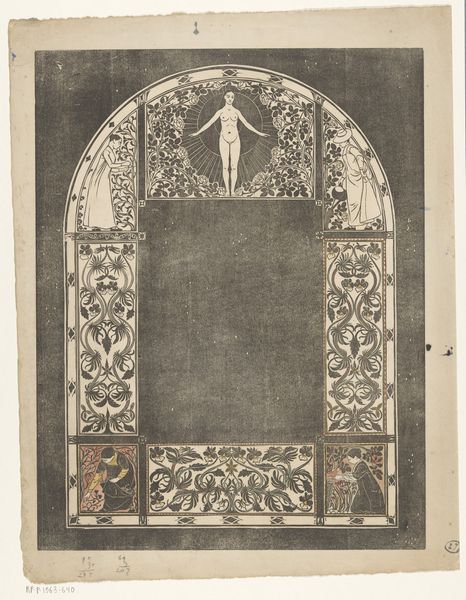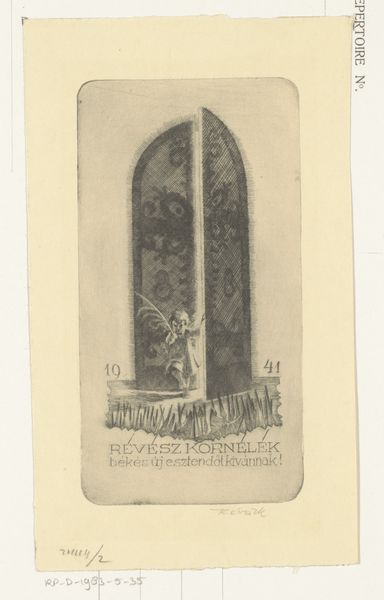
drawing, print, etching
#
drawing
# print
#
etching
#
old engraving style
#
romanticism
#
cityscape
#
history-painting
Dimensions: Plate: 9 1/4 × 6 3/16 in. (23.5 × 15.7 cm) Sheet: 10 9/16 × 6 3/4 in. (26.9 × 17.2 cm)
Copyright: Public Domain
Curator: Let's turn our attention to Célestin Nanteuil's 1832 etching, "Notre-Dame de Paris," currently residing at the Metropolitan Museum of Art. Editor: It's so dense, isn't it? Dark, brooding... a feeling of Gothic Revival theatricality compressed into this single print. The contrasts are so stark, with very little mid-tone to let the eye rest. Curator: Precisely! Nanteuil masterfully uses etching to convey a powerful scene and emotional depth. Think of the context: Romanticism prized emotion, individualism, and the revival of medievalism. Consider, too, that this etching, being a print, allowed for the mass production and dissemination of this romantic view of architecture and history. Editor: The symbolic language practically shouts at you. You have figures tucked away in nearly every architectural nook; each feels steeped in centuries of narratives. The upper statues... Is that Justice, perhaps, hovering over the implied chaos below? There's an implied tension, a silent narrative playing out in the shadows. Curator: Good eye. These repeated, historical depictions are interesting when we consider who had access to see them. As the original Notre-Dame cathedral was falling apart and becoming unsafe in the late 1700’s, it only was made stable through its new repurposing as a "Temple of Reason" during the French Revolution, where it was later decreed that this location could later return to it's true religious status after Napoleon seized power. This print is like a memory palace, with architectural and artistic traditions referencing France’s deep and conflicted history. Etchings could be widely circulated; therefore, it democratizes and commodifies gothic iconography. Editor: The contrast between the dark interior scene and the ornate framing pulls you in, like peering through a window into another time. There is a story unfolding here in this composition that touches on the darker realities, and a deeper complexity surrounding it. Curator: A darkness readily available for the masses. This speaks volumes about Nanteuil's choices and how printmaking functioned in the Romantic era and beyond. It shows how something beautiful also has it's social realities to be aware of, or sometimes hidden from the light. Editor: Indeed. It's much more than just an etching of a landmark, isn’t it? A portal through the material into something deeper.
Comments
No comments
Be the first to comment and join the conversation on the ultimate creative platform.
